Network Science Lab
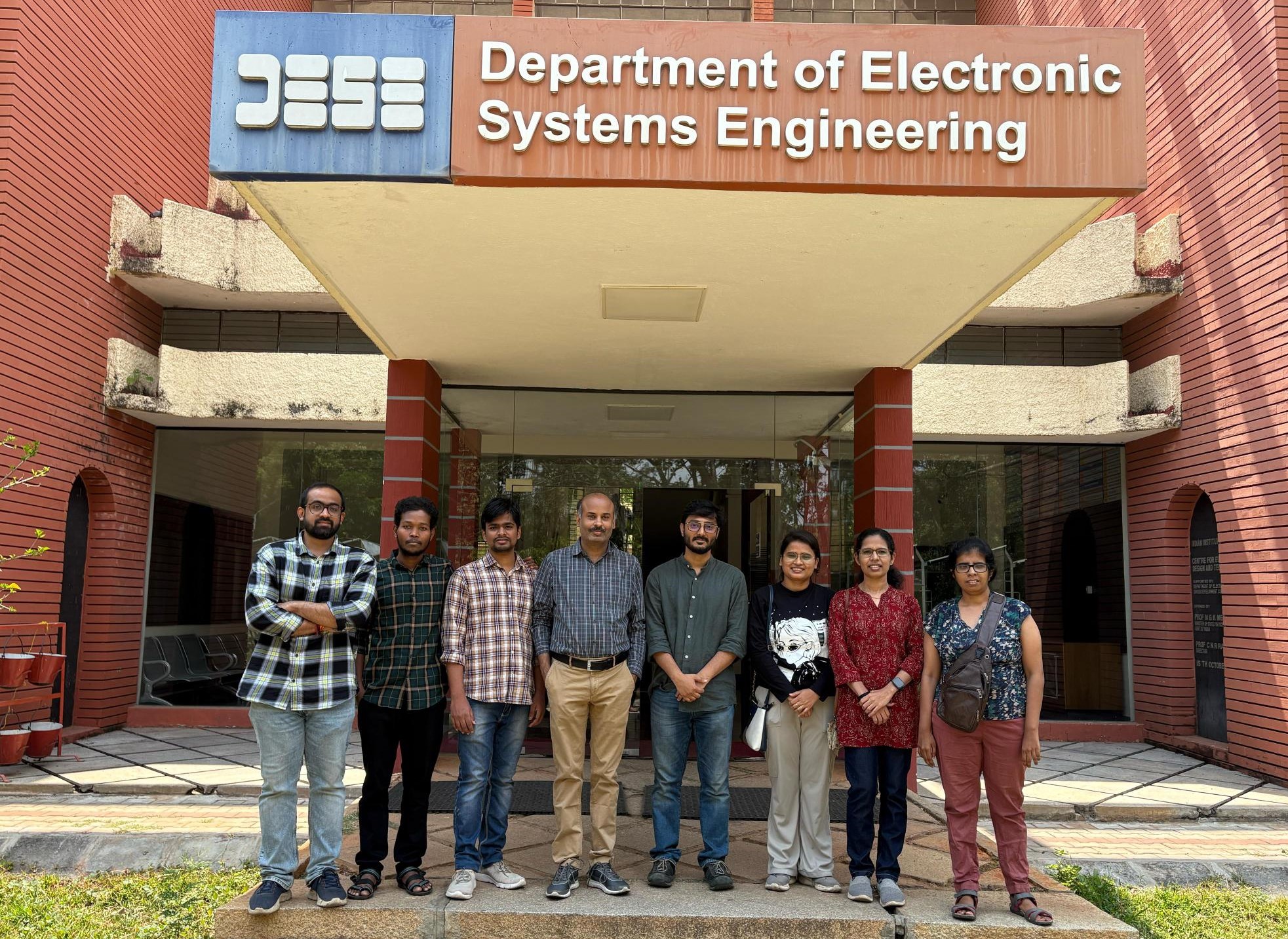
Research Areas
Our work broadly focuses on communication networks, time-sensitive networking, stochastic systems, cloud computing, dynamic caching, optimization and game Theory.
Time-Sensitive Networking for Tactile Cyber-Physical Systems
We develop TSN infrastructure to support TCPS applications, to ensure deterministic networking.
- Explore P4-programmable smartNICs to design and implement a TSN switch which support time-aware shapers, precise synchronization and frame replication and elimination for reliability. These features are built into the data plane using P4 to ensure line-rate performance.
We develop a TCPS testbed with modular domains comprising of:
a. Human Operator domain: Program Haptic devices i.e. Geomagic Touch, SenseGlove Nova and integrate it with networks.
b. Teleoperator domain: Program industrial robotic arms and grippers for real-time precision control by a human via a network. And integrate it with networks.
c. Network domain: Design and implement an intercity network between Bengaluru and Chennai. This network consists of configuring a LAN and a WAN. The WAN is a backhaul link carrying shared traffic and our design is towards enabling a DetNet over MPLS links. MPLS links have been configured. The LAN is being designed as a TSN-enabled switches and a TSN-DetNet gateway connecting the LAN and WAN. TSN requires the network nodes to be time synchronized and our design has enabled time synchronization across the network using Precision Time Protocol (PTP).
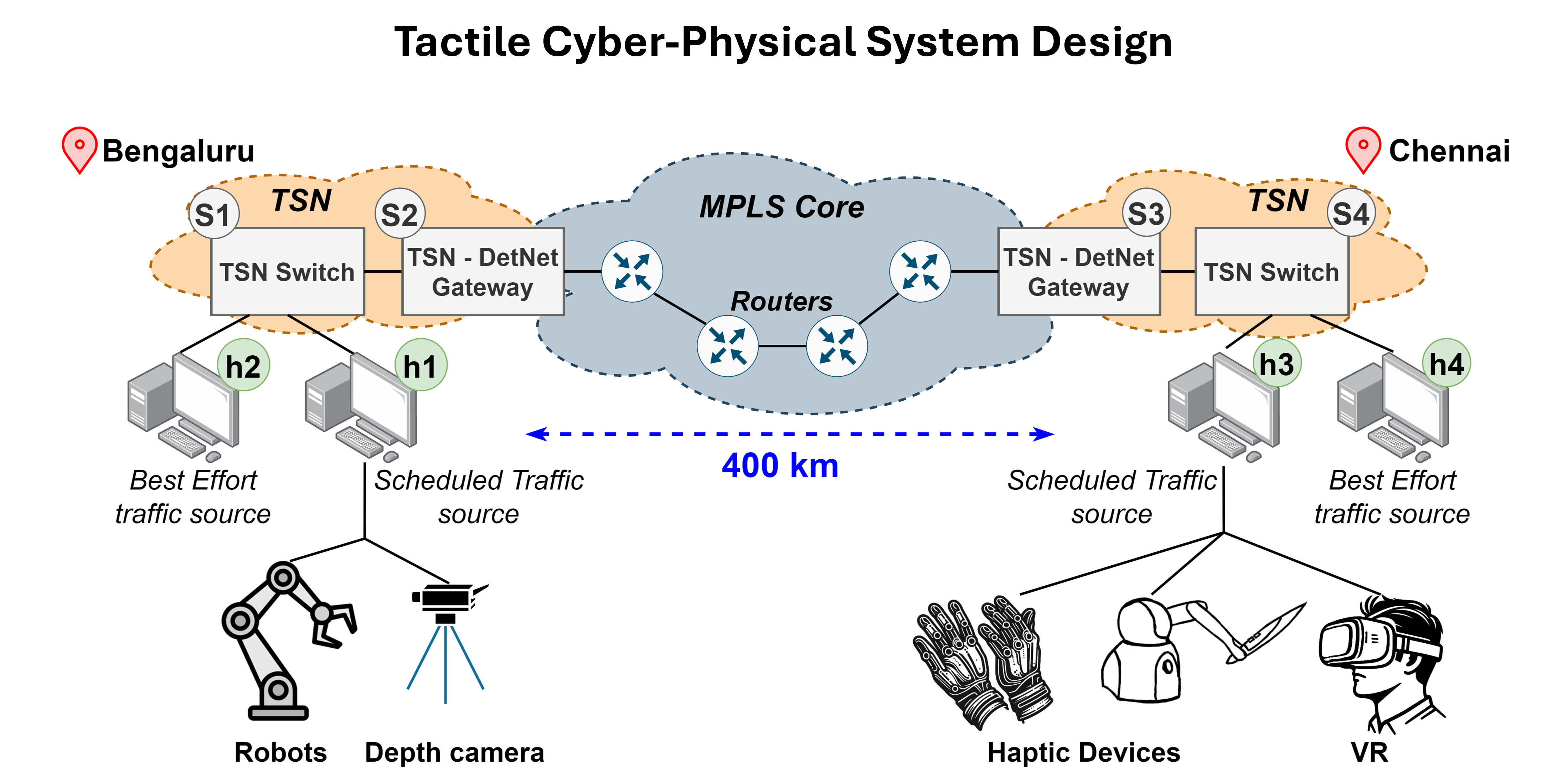

Caching and Delivery of Dynamic Contents
Scheduling Policies for Delay constrained flows in Communication Networks
In real-time communication networks, meeting delay constraints is crucial for ensuring reliable data transmission. Our research focuses on designing and analyzing scheduling policies that allocate resources efficiently while guaranteeing deadline adherence. We explore whether flows can be scheduled under policies like Earliest Deadline First (EDF) or Deficit Round Robin (DRR) and determine the optimal parameters to ensure timely and fair packet delivery. By characterizing scheduling feasibility and performance trade-offs, we develop strategies that enhance network efficiency. Our work addresses fundamental questions: Can a given scheduling policy meet all deadlines? If so, what parameters ensure both reliability and fairness?
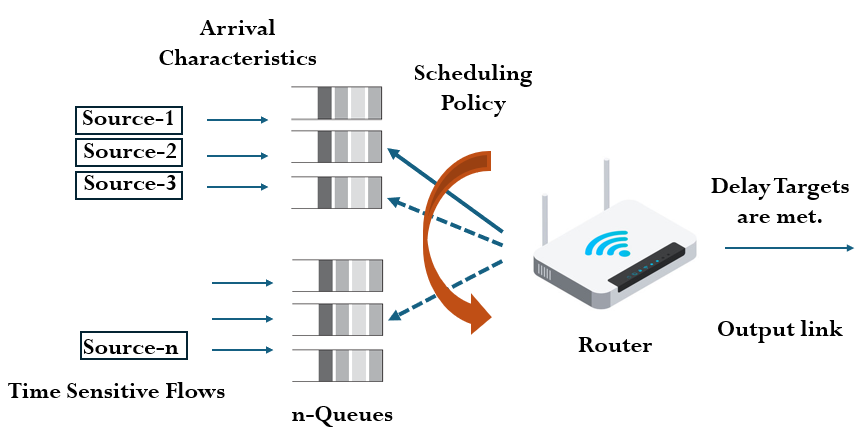
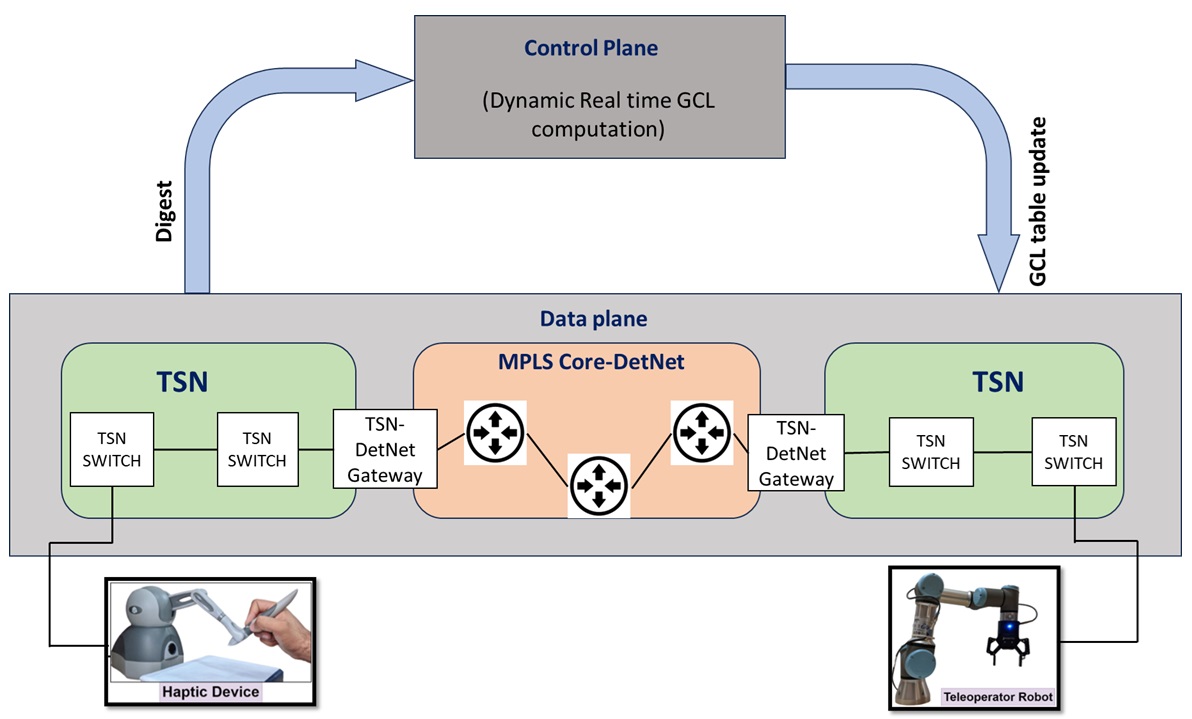
Leveraging SmartNIC Programmability to Optimize TSN for Critical Applications
Our research explores scheduling mechanisms like Time-Aware Shaper (TAS) and examines how Frame Replication and Elimination for Reliability (FRER)
affects deterministic performance. By leveraging SmartNIC programmability, we aim to optimize real-time traffic management while ensuring fault tolerance.
Our work focuses on enhancing TSN capabilities for critical applications such as industrial automation, automotive networks, and high-performance computing..
Time-sensitive information is crucial in IoT systems for real-time monitoring, serving users like weather agencies, farmers, and industries. These users often need similar data (e.g., temperature, humidity) but may avoid deploying their own sensors due to cost and logistics. Sensing-as-a-Service (S2aaS) allows access to sensor data without infrastructure ownership. In this system, a Sensor-Cloud Service Provider (SCSP) aggregates and delivers data to users on demand, paying sensor owners and incurring communication costs, while charging users based on service quality. Our goal is to maximize SCSP revenue or minimize its costs.
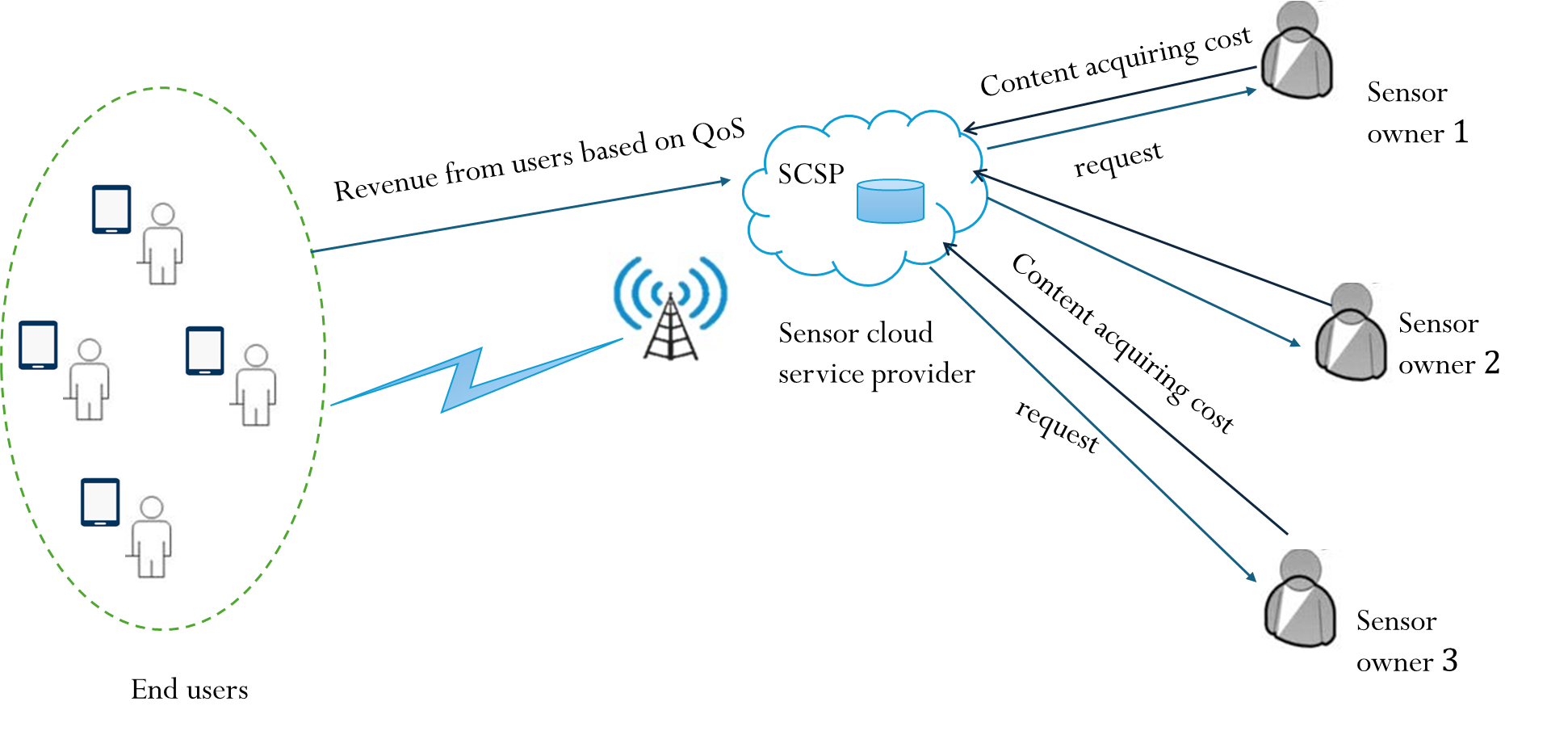
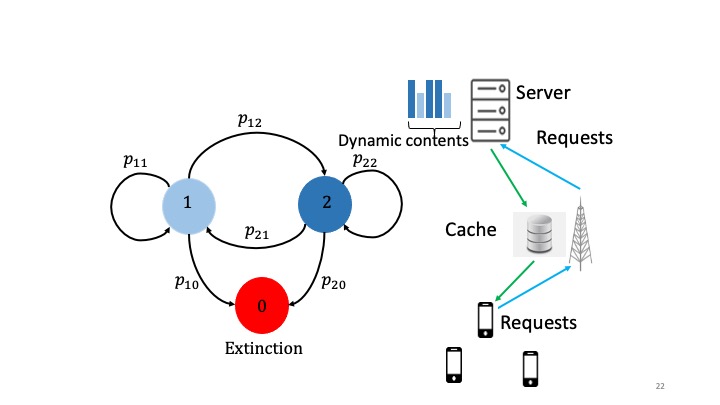
In the digital era, dynamic content, for example streaming videos, constantly evolves in popularity and availability. This work explores optimal proactive caching strategies for such content, where items arrive stochastically, remain for random durations, and their popularity changes via a Markov process. Fetching and caching content incurs costs, but cache misses are costlier. The study models single-content caching as an average-cost Markov decision problem and multi-content caching as a restless multi-armed bandit problem with mortal bandits. It proves indexability, derives Whittle indices, and validates the policy’s efficiency through numerical simulations.
